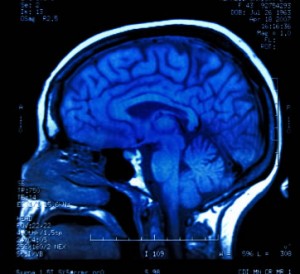A new study on emotion recognition has shown that people with frontotemporal dementia are more likely to lose the ability to recognise negative emotions, such as anger, fear and disgust, than positive emotions such as happiness.
“All patients continue to recognise happiness, at least in the initial stages of the disease, even when recognition of other emotions is heavily impaired,” says Dr Olivier Piguet, one of the study’s authors. “There is something about a happy face that is different from the way other emotions are expressed.”

© istockphoto
Frontotemporal dementia(FTD) is one of the most common types of dementia in younger adults. The age of onset of FTD is typically in the 50s or 60s but can be as young as 30.
Along with various other symptoms affecting behaviour and language, all people with FTD experience difficulty in recognising emotions (facial expressions).
Up until now, however, it was not known whether the three subtypes of FTD (semantic dementia, progressive non-fluent aphasia and behavioural-variant FTD) have the same emotion-recognition deficits, and whether certain techniques could help overcome these deficits.
Dr Piguet’s team tested the ability of 41 people with FTD to recognise six basic facial emotions (anger, disgust, fear, happiness, sadness and surprise).
The team also performed a second test, using faces with exaggerated emotions, to determine whether more intensely expressed emotions would help with recognition.
Of the three FTD subtypes, Dr Piguet’s team found that those people with the semantic dementia subtype were the most impaired when it came to recognising emotions.
“Semantic dementia patients were impaired across the board,” says Dr Piguet. “Even when we increased the intensity of the emotions, it didn’t make any difference to their ability to recognise them. These patients probably have a disturbance in their core emotion recognition pathways.”
Patients with the progressive non-fluent aphasia and behavioural-variant FTD subtypes also had emotion-recognition deficits, particularly for angry and sad faces, but tended to improve if the emotions were made more obvious.
“Problems with emotion recognition had not been observed in patients with progressive non-fluent aphasia before, so this is a new finding,” says Dr Piguet.
“In both these types of patients, part of the problem is probably due to a deficit in attention, so perhaps they are not paying attention to the right places when looking at faces,” he says.
Dr Piguet says these results suggest there may be ways to address the problem of emotion recognition deficits in these patients, at least early on in the disease process. For example, exaggerating facial expressions may aid in communicating certain emotions.
A better understanding of emotion recognition deficits in FTD will help with predicting the progression of the disease, says Dr Piguet.
“When patients come to see us, it’s important for them to know what’s going to happen to them. Unfortunately, we’re still not great at predicting disease progression. This research, however, will help us better understand what symptoms patients will develop over time, what they can expect for the future, and hopefully will help with developing some strategies for coping with their disease.”
The original news release can be found here The study was published in the journal Social Neuroscience.
Fiona Kumfor, Sharpley Hsieh, Sharon Savage and Prof John Hodges also contributed to this research.
Reference: Kumfor F, Miller L, Lah S, Hsieh S, Savage S, Hodges JR, Piguet O. Are you really angry? The effect of intensity on facial emotion recognition in frontotemporal dementia. Social Neuroscience. 2011 Sep 30. [Epub ahead of print]
